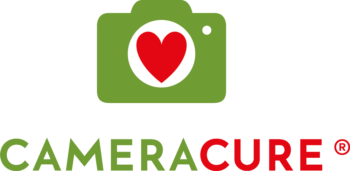Chapter 2. DOING: We increase our ability to act
Theme 2
Doing
Even though we can reach a state of presence through the practice of mindfulness and similar techniques for entering an attentive state, photo- graphy offers us a additional bonus; decisiveness – none of the moments we experience will get onto the memory card unless we press the shutter button. Thus, the camera gets us to be, consciously or unconsciously, bet- ter at seizing opportunities. Photography trains us to be alert and active. First, we decide to do something and then we do it, and afterwards we see the results.
As a rule, we understand what is smart for us to do. Still, we often hesitate with our finger remaining on the trigger. This indecisiveness can hinder us from living our lives fully. Opportunities pass us by without us grabbing a hold of them. Photography is about seizing opportunities. Thus, we can, through practicing taking pictures, get to train our abi- lity to take advantage of opportunities, and even enable them to occur. Photographers who learn to listen to their intuition and have the courage to make mistakes, get training at making decisions of a much more vital nature.
Many mental health problems result from bad choices. In the health care system, we often offer support comfort and medication to relieve symptoms, a combination which I think is ethically doubtful. Instead we should encourage and guide people to make better choices – not support them in being who they are at that moment but what they can become in the future.
As a doctor I am used to writing prescriptions for pills that make it so that people can endure unacceptable life situations. As a photography instructor, I don’t have the alternative to provide pills for photographers who are unsatisfied with their bad pictures. The only thing I can do is to teach how to make wiser decisions. And the process behind decision-ma- king is the same whether good pictures or good lives is at stake.
In the next week we will focus on the power to take action, making life more colorful and arranging things so that luck can appear and that we can follow our intuition. It is easier said than done. Let the camera help you do what is easy to say but hard to do.
Habit 2
Noting
Unfortunately, I didn’t begin writing down my thoughts or ideas until I was 46. Now, I work hard to recover something of what has been lost. Many of the people who have achieved what they wanted to do in the world have had a notebook as their companion or have been consistent in writing in their journal.
Many people prefer to write in a traditional journal in the evening. That way they get a conscious understanding of the day’s events and they get some peace of mind before going to sleep.
Others swear by writing in the morning before they have properly woken up and while the subconscious brain activity from the night’s dream world is still influencing their thoughts. The first rule is to let your pen flow freely – write without censoring or correcting your thoughts. The advan- tage of writing in the morning is that your words and thoughts can change the outcome of the day.
My favorite method is to have a small notebook in which a small pen can be placed on the inside of its spine. I always have it in my pocket, and it takes up little space. There is only a short distance from having a thought and getting it down, which is immensely important since there are only 20-30 seconds from the moment a thought arises until it leaves our awareness. Our ideas flit around like butterflies and therefore they have to be captured exactly when we have them.
I write down my own thoughts and things I read in books or online. Suggested books I should buy or films I should see. My little notebook has revolutionized how I learn, remember and discover. It acts like a magnet for thoughts. It attracts ideas and philosophical musings that otherwise would not have popped into my mind.
One of the most important things I do is to transfer what I have writ- ten into a larger notebook as soon as I have filled the smaller notebook. It takes me about one working day to do this. This is a good investment. I become aware of how many of my thoughts have already been forgotten. By writing them down again, they stick better in my memory.
BOOK SUGGESTION: The Artists way by Julia Cameron

In 2005, my family and I were traveling in Croatia. I was on paternity leave after my son Torbjørn was born. At a partially secluded museum we saw a small, neat stone table with a depiction of the Greek god Kairos on it. Kairos was the god of the fleeting moment, the one that never comes back if you don’t seize it. Kairos had a long forelock so that you could grab him as he came towards you, but if you reacted too late then he would slip by because the back of his head was smooth. The wings on his feet and his back ensured that he was lightning quick.
I thought this had to be a god for photography, and for me! Thus, we named both our sailboat and our company after Kairos. Something that appealed to me about this god is that he doesn’t care about whether I follow him or not, that is potentially my own problem.

